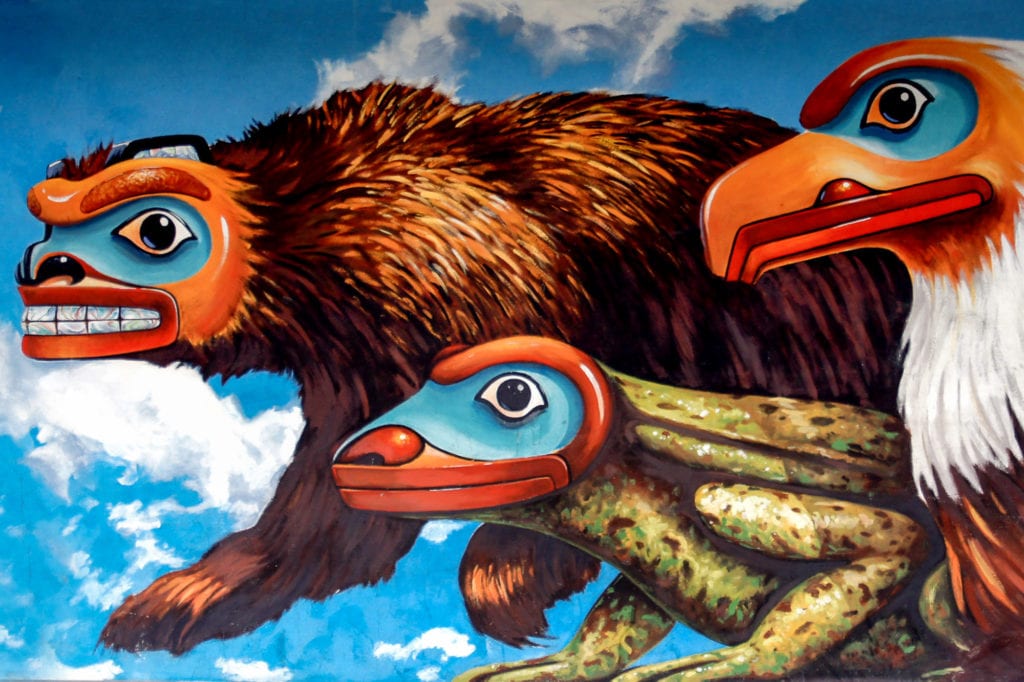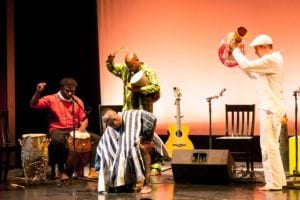
Ben Brown is almost certain that he’s chairman of the Alaska State Council on the Arts. Unlike the council’s four paid staff members, who were abruptly fired when the council closed on July 15, Brown has received no pink slip. From time to time, he checks to make sure his name is still listed on the website of the governor’s office. As debate over the defunding of the council continues, Brown continues to lead an organization that may not currently exist.
“I’ve not been told that I’m no longer the chairman of the board of trustees and, to my knowledge, none of the trustees have been told that,” Brown said. “It’s like being a government in exile… We’re definitely in uncharted territory here.”
The Alaska State Council on the Arts became inactive after its state budget allotment was vetoed by Gov. Mike Dunleavy, throwing various projects and people into a state of limbo. Programs like the Alaska Artistic License competition and the Music on Hold project are no longer running, but they haven’t exactly been canceled either.
Ironically, many of these programs have not, themselves, been defunded. Although the council received matching state and federal endowments of roughly $700,000 per year, it received an additional $1.5 million from groups like the Rasmuson Foundation, Margaret A. Cargill Philanthropies and the CIRI Foundation. That $1.5 million in private funding would still be available to the council and, by extension, to Alaska’s artists, if the council’s state funding had not been vetoed by Dunleavy.
Although groups like the Rasmuson Foundation are glad to spend millions on the Alaska arts scene, they rely on the arts council to decide exactly where the money should go.
“The State Arts Council has expertise we don’t have, as far as understanding the capabilities of local arts institutions,” said Diane Kaplan, president of the Rasmuson Foundation. “They know those institutions inside and out, better than we do. It’s not unusual for us to rely on expertise we don’t have in-house for some of our important grant-making activities.”
The arts council isn’t broke — it has hundreds of thousands of dollars in private grants sitting untouched in its accounts. However, without a state endowment to keep it running, the council cannot make use of this money. Although the council’s Rasmuson-funded programs are on hold, the Rasmuson Foundation has not asked for its money back, Kaplan said.
If the council stays closed permanently, it’s possible that a nonprofit or other group could step in to help administer grants. However, Brown believes that rebuilding the grant system from scratch would be reinventing the wheel.

“Whatever other entity that does step in is not going to do it any more efficiently or any better than the Alaska State Council on the Arts did it,” Brown said. “There’s no reason not to return to that time-tested, incredibly successful, incredibly fiscally conservative model that leverages all this non-governmental money and has four employees doing the work of six or seven people at least.”
Residents may recall Okaidja Afroso, the Ghanaian afropop performer who visited Cordova in March 2019. While in Cordova, Afroso offered an African dance workshop and collaborated with local dance groups. Like many artists visiting from out of state, Afroso’s travel was mostly subsidized by a grant from the Harper Arts Touring Fund, a program bankrolled by the Rasmuson Foundation and administered by the State Council on the Arts.
Without the assistance of a Harper grant, there’s no way Afroso would have been able to make it to such a small community, said Alyssa Kleissler, secretary of Cordova Arts and Pageants. A community the size of Cordova can rarely rely on ticket sales to make back travel and freight costs for touring artists.
Like other projects privately funded but administered by the council, the Harper Arts Touring Fund has been thrown into limbo. The money is there, but the mechanism for distributing it is not. If the fund closes down for good, it seems unlikely that small communities like Cordova will be able to continue bringing in artists like Afroso.
Events like Afroso’s dance workshop shouldn’t be thought of as mere luxuries, argues Cathy Renfeldt, board member for Cordova Arts and Pageants. Youth who participate in music or drama programs are significantly less likely to drop out of school, be arrested, use illegal drugs or engage in binge drinking, according to a 2000 Office of Juvenile Justice and Delinquency Prevention report.
“I see art as a need,” Renfeldt said. “It’s an outlet for many people, helping them contribute to society in a positive way. When you take that away, there’s bound to be detrimental effects.”
A complete restoration of state funds would allow the council to pick up where it left off, Brown said. A partial restoration of funds would allow the council to resume some, if not all, of its activities.
HB 2001, which would override funding vetoes to the council and other bodies while also reducing the yearly Permanent Fund Dividend to $1,600, is due to be signed or vetoed by Dunleavy by Aug. 30. Like Kaplan, Brown hopes that a restoration of funding will restore the status quo.
“I just don’t want to see this aspect of Alaskan life diminished by our small, efficient, not-very-expensive council becoming collateral damage in a much larger battle over the budget,” Brown said. “I think, in the long run, Alaska will definitely have an arts council again, but I don’t know what the long run is.”





